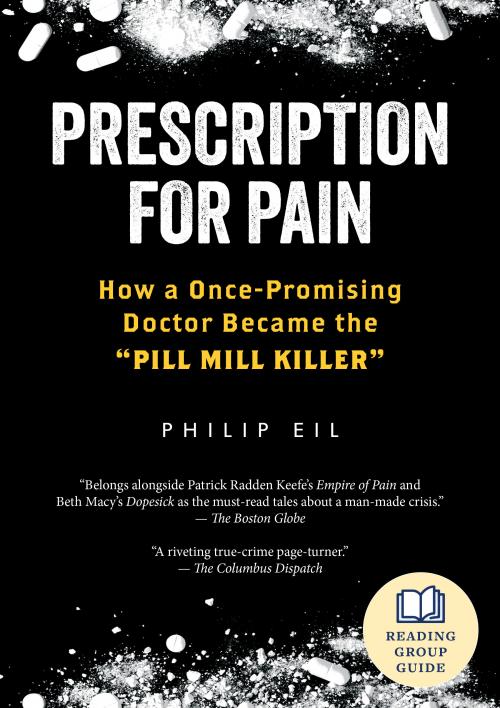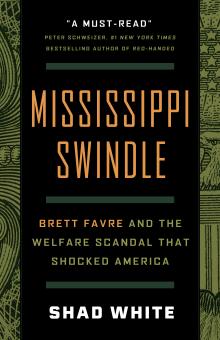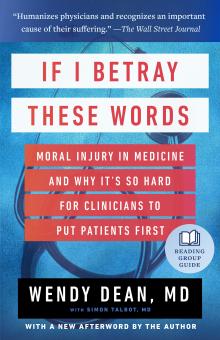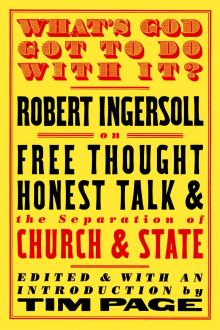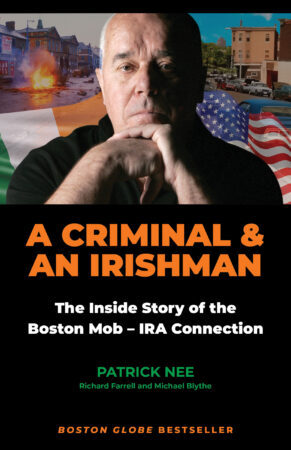Excerpt
Prologue: The Arrest
Lake Shore Drive runs along the eastern edge of the city of Chicago, separating the skyscrapers of downtown from the shores of Lake Michigan. The roadway begins in the South Side, and continues north to the city’s upper outskirts. Along the way, travelers pass an array of dazzling sights: beaches, parks, museums, a football stadium, a Ferris wheel. With four lanes in each direction, the road carries more than 100,000 vehicles every day, while countless additional bikers, walkers, joggers, and rollerbladers use the abutting paths.
But Lake Shore Drive is more than just a means of transportation; it’s also a status symbol. The highway has been the address of movie stars, professional athletes, and other celebrities. In this way, Lake Shore Drive is a bit like Park Avenue in New York or Ocean Drive in Miami: it’s both a mark of prestige and an instantly recognizable landmark. The road makes appearances in famous Chicago-set films like Risky Business, Ferris Bueller’s Day Off, and The Blues Brothers. In 1998, a Chicago Tribune architecture critic wrote that “The lakefront is Chicago’s undisputed crown jewel…the face Chicago presents to the world.”
And, of course, if you live in Chicago, Lake Shore Drive needs no introduction at all. I recently spoke with someone from the city who described it in blunt and memorable terms. “When you are from Chicago and you say or hear ‘Lake Shore Drive,’ you immediately think of money,” she said.
* * *
The apartment building at 3240 North Lake Shore Drive was completed in 1929, just months before the stock market crashed. And the twenty-story brick building is a reflection of the high-flying era that preceded the Depression. The entrance to the building features stone archways, gaslamp-style light fixtures, wrought-iron railings, and carefully maintained beds of flowers. The lobby has crystal chandeliers, gilded ceilings, and black and white marble floor tiles installed in a chess-board pattern. Some apartments in the building have wood-burning fireplaces. The building is staffed by a small army of employees, including doormen, maintenance workers, car valets, and elevator operators.
In May of 2007, Dr. Paul Volkman lived with his wife, Nancy, on the ninth floor, in a spacious apartment with three bedrooms. Six windows looked out over the bright blue waters of Lake Michigan. The apartment had a grand piano, and Nancy had worked with an interior decorator to outfit the place with artwork and furniture. Rent was $4,500 per month. It was, in the words of Volkman’s daughter, Jane, a “rich man’s apartment.”
It was in this apartment, at around 7:30 on a Monday morning, May 21, when Volkman heard a loud banging on the door. This was unusual. If the Volkmans had visitors, they would usually receive a phone call from the building’s front desk. Volkman went to the door, and when he opened it, he saw a group of law enforcement agents with guns drawn. They were there to arrest him.
Volkman had just gotten out of bed, and the agents allowed him to get dressed. After he was handcuffed and his legs were shackled, he was led to the elevator, walked through the lobby, and ushered into a SUV that waited outside. The indignity of that moment, in which he was marched through the lobby in shackles, was something he described repeatedly in the years that followed. It was as if the scene was playing on a loop in his mind.
* * *
The reason for Volkman’s arrest was a 35-page federal indictment that had been filed 300 miles away in Cincinnati, Ohio. That document alleged that he was one of three players in a massive scheme to illegally distribute prescription drugs. Prosecutors said that his criminal activity had taken place over a span of nearly three years, from April 2003 to February 2006, in towns in the Appalachian foothills of Southern Ohio.
The indictment said that Volkman had worked as a physician in a series of cash-only pain clinics that prescribed high doses of narcotics and other controlled substances. The clinics were patrolled by armed guards. And when local pharmacies refused to fill Volkman’s prescriptions, the clinic opened its own on-site dispensary. Prosecutors alleged that Volkman continued to prescribe medications despite obvious indicators that patients were addicted to the medications, re-selling their pills, or both.
Volkman’s partners in this scheme — and his co-defendants in the indictment — were a mother-daughter duo who owned and operated the clinic, Denise and Alice Huffman. The indictment noted that neither woman had any medical education. And during the course of the Volkman-Huffman partnership, the document said, over a million pills had gone missing from the clinic, in addition to the hundreds of thousands that were prescribed and dispensed.
Prosecutors claimed that the consequences of this operation were catastrophic. Though Volkman wasn’t formally charged with murder or manslaughter, the indictment described a disturbing pattern where people traveled to the clinic, met with the doctor, received a prescription, and, within a few days, died from an apparent overdose. Included in the indictment were names of fourteen patients who prosecutors claimed to have died as a direct result of medication Volkman prescribed.
The indictment ended with an estimate of how much Volkman and the Huffmans had made from this operation, which the government was now seeking to recoup: $3,087,500 from each of the Huffmans, and $3,787,500 from the doctor himself.
* * *
Following his arrest, Volkman was driven to a building downtown where he says he was strip–searched, given an orange uniform, and placed in a holding room for hours with what he later described as “a bunch of gang-members that were awaiting arraignment.” After his bond was denied, he was transferred to the Metropolitan Correctional Center, a mustard-colored skyscraper in downtown Chicago with thin window slats.
The 60-year-old physician remained in custody there for the next few weeks, while word of his indictment spread. Wire reports about the case appeared in newspapers in Maine, Florida, Pennsylvania, and Texas. The Drug Enforcement Administration — the federal agency that had led the investigation — issued a press release with a quote from a high-ranking agent who said, “This indictment serves as a warning to all medical professionals that if you illegally prescribe medication for personal gain you will be prosecuted to the fullest extent of the law.” An article in the Chicago Tribune mentioned that, at an early stage in his career, Volkman had run a pediatrics office in Chicago. The piece included a quote from Volkman’s daughter, Jane, who said that her father was “completely innocent.” Meanwhile, Ohio’s capital-city newspaper, the Columbus Dispatch, ran a story noting that, in 2004, Volkman was the largest single purchaser of oxycodone in the United States.
It was more than two weeks into his stay at the Metropolitan Correctional Center that Volkman hand-wrote a letter to the magistrate overseeing his detention. His immediate purpose was to refute the idea that he was a flight risk, which prosecutors had used to justify his ongoing imprisonment. (An agent present at his arrest would later testify that Volkman told agents that “he had money in the Bahamas, and that as soon as he got out, he was going to go there.”)
But, over the course of six pages, Volkman took aim at the entire case against him. He argued that he was fully innocent of the charges and that he was a “law abiding, responsible physician and family man with no previous history of violations of law and no history of any actions against him by any state medical board.” And he vowed that he had every intention of appearing for any scheduled court date to “vigorously contest the vicious, fabricated allegations with which the gov’t has attacked me and my family.”
* * *
Years later, I would interview various people from Volkman’s life, including med-school classmates, his two children, and people who knew him in Chicago. And among these people, the most frequent reaction was shock. One person who had known him in college and graduate school told me, “I honestly thought that one day I would pick up the newspaper and I would see that Paul had been given the Nobel Prize in Medicine.”
I understand their confusion.
The facts of Paul Volkman’s story were like puzzle pieces that didn’t seem to fit together.
How had a man who lived in Chicago committed a multi-year crime spree hundreds of miles from where he lived?
How had this former high school valedictorian wound up working in a cash-only pain clinic with armed guards and an on-site pharmacy?
Why was Volkman working in a clinic owned by a woman with no medical training, who had previously worked in factories and fast-food restaurants?
And how could prosecutors claim that he had caused so much damage, while Volkman claimed to be completely innocent?
Some of that factual dissonance would have been visible during his early-morning arrest on Lakeshore Drive, as he shuffled across the lobby’s marble floors with shackled feet. And some of it was captured in Volkman’s signature at the bottom of his letter from jail, written on June 4, 2007. In a sense, that signature captured the entirety of his life and career:
Respectfully
Paul H Volkman, M.D., Ph.D.
Inmate 22435 – 424
* * *
Over the course of the American opiate epidemic, more than a hundred doctors have been convicted of illegally dispensing prescription drugs. The long list includes Kevin Klemmer in Colorado, Sanjay Kumar in North Carolina, David Webb in Florida, Philip Dean in Missouri, Howard Diamond in Texas, Shannon Caesar in Louisiana, and Jerrold Rosenberg in my home state of Rhode Island. There have been prosecutions of doctors in New York City, Los Angeles, Dallas, Detroit, Las Vegas, Louisville, Richmond, Honolulu, Savannah, Tulsa, and Wichita, among other cities. In 2020, the journal Injury Epidemiology published an article based on a review of media coverage between 1995 and 2019. The authors found 372 instances of physicians “involved in opioid-related criminal cases,” including cases of alleged fraud, money laundering, and manslaughter.
And yet, even in this era of widespread medical corruption, the case of Paul Volkman stands out.
It stands out, first, for the sheer number of pills that moved through his clinics. By Volkman’s own admission, many of his patients were being prescribed between 600 and 800 pills per month. And when authorities executed a raid of his clinic in 2005, they found stacks of pre-filled, pre-labeled bottles of pills in the dispensary, waiting to go into the hands of patients. At one point, a medical supply company notified the DEA that Volkman had placed the largest order for the opiate hydrocodone the company had ever seen.
Second is the fact that, training-wise, Volkman had obtained not just a medical degree, but also a doctorate in pharmacology and toxicology. And as he explained under oath at one point in his career, “Pharmacology involves the study of drugs, pharmaceutical agents, and the way they act. And toxicology involves the study of overdoses, poisons, and the treatment thereof.” If anyone should have known the consequences of over-prescribing dangerous medications, it was Paul Volkman, MD, PhD.
And then there was the sentence. On February 14, 2012, Paul Volkman was sentenced to four consecutive life terms in federal prison. This appears to be the longest sentence imposed on any convicted doctor during the country’s opiate epidemic. To find a comparable sentence, you have to step out of the world of medical crimes and into the realms of mob activity, terrorism, murder, and rape. Perhaps the closest match to Volkman’s sentence is the punishment given to the “Unabomber,” Theodore Kaczynski, who also received four life sentences for a campaign of mail-bombing that left three people dead and more than twenty injured.
But there is one more thing that, for me specifically, makes the Volkman case stick out: he and my dad were classmates and friends for ten years.
My father, Dr. Charles Eil, first met Volkman when they were freshman at the University of Rochester, in 1964. And then, by coincidence, after college, they attended the same MD/PhD program at the University of Chicago, from 1968 to 1974. During those years their lives ran on close parallel tracks. They took classes, played bridge, and sang in the glee club together. On graduation day at the University of Chicago, their families ate at the same restaurant.
Photos from the 1968 University of Rochester yearbook even show a visual resemblance between the two young men. In his photograph, Volkman is wearing a jacket, a white shirt, a necktie, and dark-framed glasses, with his hair neatly combed to the side. In the other image, my dad is dressed similarly. There are certainly some differences between the photos. But a viewer’s immediate impression is that these two guys could pass for brothers.
* * *
I first learned about Volkman in 2009, when I was 23 years old. I had just embarked on a career in journalism, and the news of my dad’s indicted former classmate hit me like a lightning bolt.
Much of that reaction was sheer surprise. My dad is a quiet, mild-mannered guy who spends his free time singing in civic chorale groups, reading books, and playing golf. I don’t think he’s ever even gotten a speeding ticket. And now, I had just learned, he knows a guy charged with prescription drug-dealing? It was astonishing.
My lack of any prior knowledge about Volkman further fueled my interest. Unlike some of my dad’s other friends and colleagues, Volkman had not been to dinner parties at our house. The Eil and Volkman families had not gone on vacations together. When I first learned about his case, I knew little more than two basic facts . . .

